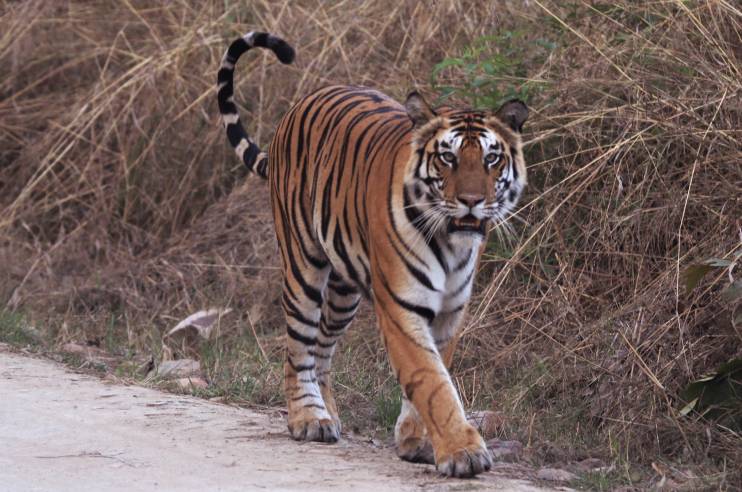
02 Aug, 2022
How Panna National Park Got Its Tigers Back And Became The Best Tiger Safari Destination In Madhya Pradesh
One of the finest national parks in India, Panna National Park is undoubtedly an amazing place to be in nature, away from the chaos of the city. The soothing atmosphere of the verdant valleys on the banks of the Ken River flowing through the national park, is one of the main reasons for it being home to a rich collection of biodiversity. From scorching summer to alluring monsoon to pleasant winter - the park is an epitome of a wide variation of nature. Besides being one of the best national parks for tiger safari in India, it is also famed among wildlife enthusiasts for being home to seven different species of vultures. From the tourism perspective, another major highlight of this park is its location. Panna National Park, a prime location of tiger safari in central India, is located at a distance of just about 30 kilometres from the world-famous historic site Khajuraho. Apart from the tigers and their interesting reintroduction stories, the close proximity of an internationally-acclaimed tourist place of Madhya Pradesh, helps it become famous among the travellers coming across the globe.
Let’s know about the other interesting facts about Panna National Park.
History of Panna National Park
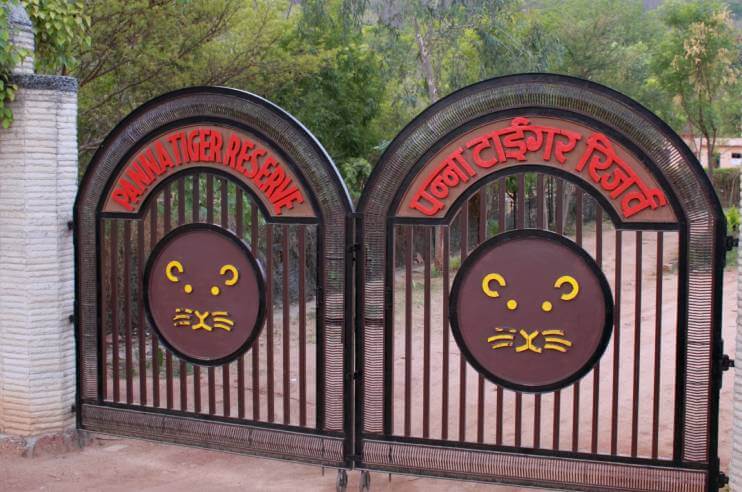
Once a private hunting reserve for the former rulers of Chhatarpur, Panna and Bijawar state, Panna was declared a national park in 1981. Previously, in 1975, it was called Gangau Wildlife Sanctuary, which was created with two forest divisions such as North and South Panna. And, then in 1978, Chhatarpur Forest Division was included to extend the sanctuary.
Panna National Park, one of the important parts of Madhya Pradesh Wildlife tourism, was the 5th national park in the state and the 22nd tiger reserve in India. In 2007, it was awarded by the Ministry Of Tourism as the best-maintained national park of the country. And, recently in 2020, it was designated as Panna Biosphere Reserve by UNESCO. The biosphere reserve provides significant shelters for the Bengal Tigers, encompassing the areas of Panna National Park, three sections of Gangau Wildlife Sanctuary and the North Panna Forest Division.
The Untold Story Of Tiger Reintroduction In Panna National Park
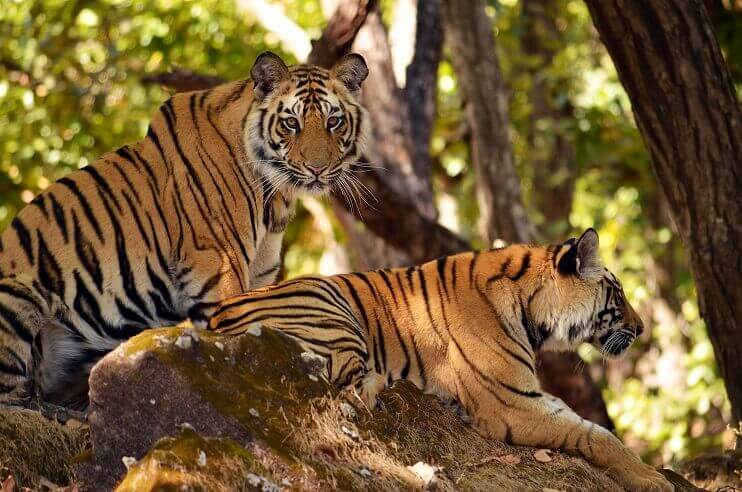
How Panna Got Its Tigers Back In 10 Years?
In 2009, the official tigers population in Panna National Park shockingly stood at zero due to illegal poaching by outsiders. The data count created an uproar among wildlife enthusiasts and the forest department of Panna Tiger Reserve (PTR) faced a nationwide backlash. A state committee was set up to probe into the matter and they suggested transferring all the officials to different zones. The suggestion was opposed by the then IFS Director of PTR, R Sreenivasa Murthy stating that all the officials of the park possessed a detailed knowledge of the park and its tigers.
He created a reintroduction programme with his team to give effort to tiger conservation in Panna, which resulted in 0 to 54 tigers within 10 years and in 2022 the count reached a total of 70 including male, female and cubs.
Reinstating tigers in the buffer zones is no cakewalk for the officials. The whole task consisted of several steps.
- A male tiger was first reintroduced in PTR who strayed off the grid within 10 days. A total of 70 forest staff and four elephants were formed as a team to track him down and re-release him in the forest.
- In between this, in March 2009, two female tigers (T1 and T2) were reintroduced to Panna from Bandhavgarh National Park and Kanha National Park.
- Another male tiger (T3) was brought from Pench Tiger Reserve but he showed homing instinct and started walking towards Pench through the villages. It was then recaptured and released in Panna.
- In April 2010, T1 successfully delivered the first litter of cubs following T2 in October 2010. By the end of 2010, the count was eight from zero including T1, T2 and T3.
- In March 2011, two orphaned male and female tigers were brought to PTR from Kanha, and the reintroduction of tigers concluded successfully.
LWF or Last Wilderness Foundation, the non-profit organisation was equally responsible for the success of the tiger reintroduction programme in PTR. To convince the Pardhi tribes to give up hunting and inspire the official staff of PTR continuously not to give up the project was mainly done by LWF. They relocated the tribes to Gandhigram Village and trained the youths to become tourist guides on nature trails in Panna. They also initiated a few programmes to promote tourism with their hands-on knowledge of the forests. Altogether the Forest Department under the guidance of IFS Officer Murthy along with LWF achieved success in the history of national parks in India.
Why is it now the best place for tiger safari in Madhya Pradesh?
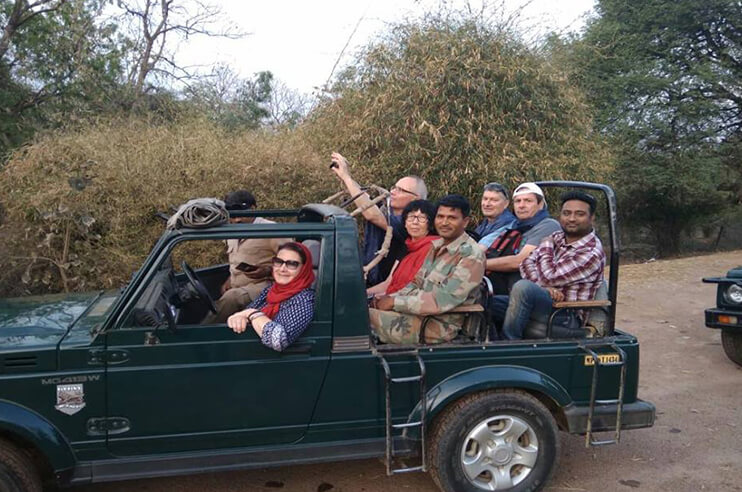
Why to visit Panna Tiger Reserve?
The historical approach to reintroducing the Panna National Park as a safe haven for the national animal was successfully concluded in 2010 when the tiger population reached 54 from zero. At the end of 2021, after all the wildlife conservation efforts there are 70 tigers in PTR and it is now one of the best places to experience wildlife safari.
PTR is a quaint place in the foothills of Vindhya Hills on the banks of the Ken River offering serenity and peace amidst nature. It is one of the less-explored parks in India and comparatively sees a lesser flow of tourists. There are two core zones and three buffer zones for tiger safari in Panna National Park, which are the ideal places for wildlife enthusiasts who want to spot the big cats and escape from crowds at the same time.
The core zones of the park are Madla and Hinauta while the Madla region is the best place for spotting herbivore animals and the Hinauta region is the best for tigers sightings in Panna National Park.
Geographical Aspects Of Panna National Park
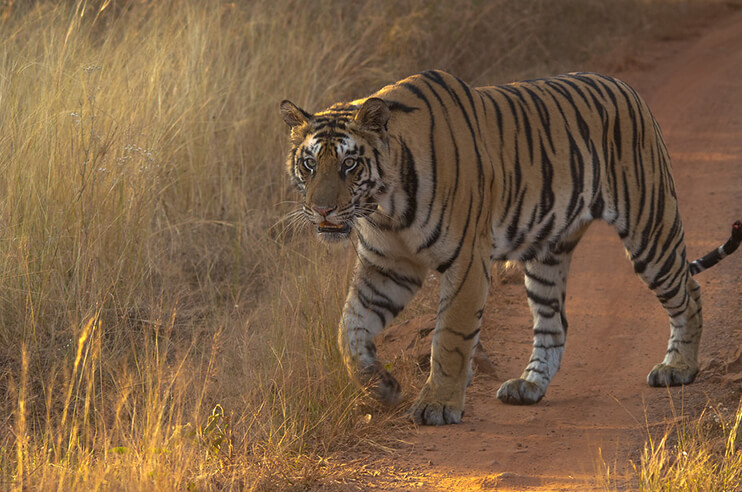
Some of the interesting geographical aspects of Panna National Park are:
- Panna National Park is located in Madhya Pradesh and spreads over two districts: Panna and Chhatarpur with an area of 542.67 square kilometres.
- The entire topography of Panna National Park can be distinctly divided in three tablelands: the Ken Valley, the upper Talgaon Plateau and the middle Hinouta Plateau.
- The amazing landscapes of the park are dominated by Vindhya Hills and Ken River. Moreover, the mesmerising waterfalls are other supporting sources of vegetation in the park.
- In the northern side of the park, it is bounded by the natural distribution of teak forests. And, the eastern side is bordered by the teak-kardhai forests.
- The park is a haven for birdwatchers as it is home to over 200 species of native, as well as migratory birds. One can witness the beauty of honey buzzards, king vulture, white necked stork, blossom-headed parakeets and many more birds in Panna National Park.
- Besides being one of the best places to go tiger-spotting in India, Panna NP & TR is also famed for spotting other mammals like leopards, sloth bears, sambars, chitals, deers, chinkara and many more other species.
- Other than birds and mammals, you can also spot other species of reptiles here like python.
- The range of flora in Panna NP includes Anogeissus latifolia, Lannea coromandelica, Madhuca indica, Lantana camera and many more.
Best Time For Jungle Safari In Panna National Park
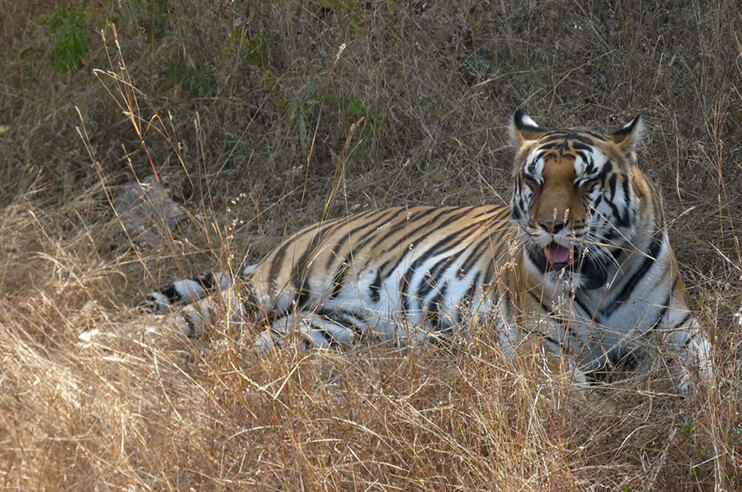
The best time for tiger jungle safari in Panna National Park is between November to March. However, we suggest you check the official website of the park before booking Panna National Park Jungle Safari. Generally, the park remains open from October to June.
How to reach Panna National Park?
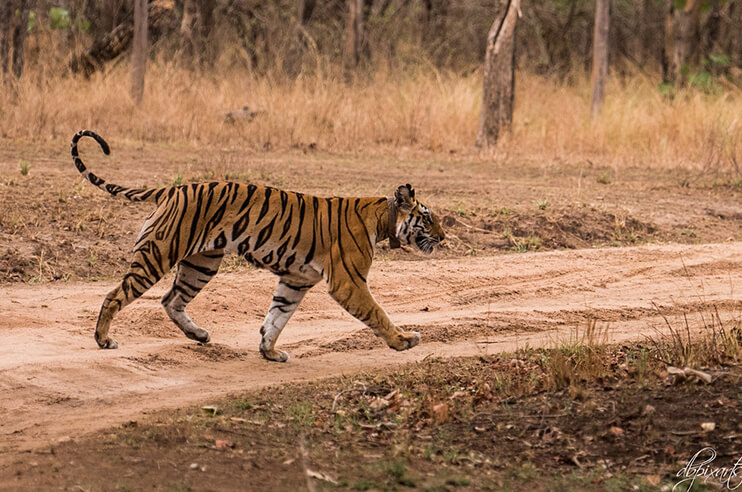
There are three ways to reach Panna National Park in Madhya Pradesh:
- By Road: Frequent bus service to Panna is available from Satna and Jhansi. Moreover, you can avail the route from Bhopal via NH 86 and NH75 to reach the park. One can also drive from Gwalior via Jhansi via NH 78 to reach Panna National Park.
- By Train: The nearest railway station to the national park is Jhansi from where you have to travel 176 kilometres to reach the park. The distance can be covered by hiring a cab or taxi from the Jhansi Railway Station within four hours.
- By Air: The nearest airport is the Khajuraho Airport, which is connected to Delhi (the capital of India) by daily flights and the park is located at a distance of 26 kilometres from the airport.
Hope this untold story of tiger reintroduction in PTR and all the interesting facts are enough to incite your wish for visiting this wildlife destination. If you also want to explore the unexplored part of wildlife tourism in Madhya Pradesh and visit Panna Tiger Reserve this year, you can browse our website for the best deals. Coming October, join us for a memorable thrilling trip for tiger sighting in Panna National Park. Comment below why you want to join our trip.
Explore Best Wildlife Tiger Safari Packages For Panna National Park
You May Also Like to Read- Wildlife and Tiger Conservation Efforts by Madhya Pradesh: Achievements and Failures
- Panna National Park Safari Booking Information
- 10 Reasons Why You Should Visit Madhya Pradesh for Wildlife Tour
- Best Places to Visit Near Panna National Park
- Must Visit Attractions in Panna National Park
- Best Hotels & Resorts in Panna National Park
- Safari Timings in Panna Tiger Reserve
- Best Safari Zones in Panna National Park
- Tiger Relocation in Panna: A Rare Success Story
Frequently Asked Questions
Which are the famous wildlife reserves in MP for tiger sightings?
Some of the best places to spot tigers in MP:
- Kanha Tiger Reserve
- Bandhavgarh Tiger Reserve
- Pench Tiger Reserve
- Panna Tiger Reserve
- Satpura Tiger Reserve
- Sanjay-Dubri Tiger Reserve
When Panna National Park was declared a UNESCO biosphere reserve?
Panna National Park was declared a UNESCO biosphere reserve in October 2020 and listed as the third biosphere reserve of Madhya Pradesh to be enlisted in the UNESCO’s World Network of Biosphere Reserves.
Apart from Tiger, what other wildlife species are found in Panna National Park?
Apart from Tiger, Panna National Park is famed for being home to seven species of vultures and more than 200 species of birds. You can also spot other wildlife species like leopards, sloth bears, sambars, chitals, deers, chinkara, hyena, nilgai and etc. here.
Is Panna wildlife sanctuary a good destination for birdwatching?
Panna Wildlife Sanctuary is one of the best places in India to experience birdwatching. It is the only place in India to spot seven species of vultures. Moreover, the park is home to more than 200 species of avifauna including a rich collection of migratory birds. Some of the birds of Panna Wildlife Sanctuary are Himalayan vulture, bar-headed goose, great thicknee, common iora, river tern, honey buzzards, king vulture, white necked stork, blossom-headed parakeets and many more.
What other places to explore near Panna Tiger Reserve?
Other places to explore near Panna Tiger Reserve are:
- Pandava Falls and Caves
- Raneh Falls
- Ken Crocodile Sanctuary
- Mahamati Prannathji Temple
- Jugal Kishoreji Temple
- Padmavati Devi Temple
- Baldevji Temple
- Madla Village
- Ajaygarh Fort
- Bandhavgarh
- Kanha
- Pench
- Khajuraho
- Bhopal
- Orchha
- Chitrakoot
- Jhansi
- Katni
- Satna

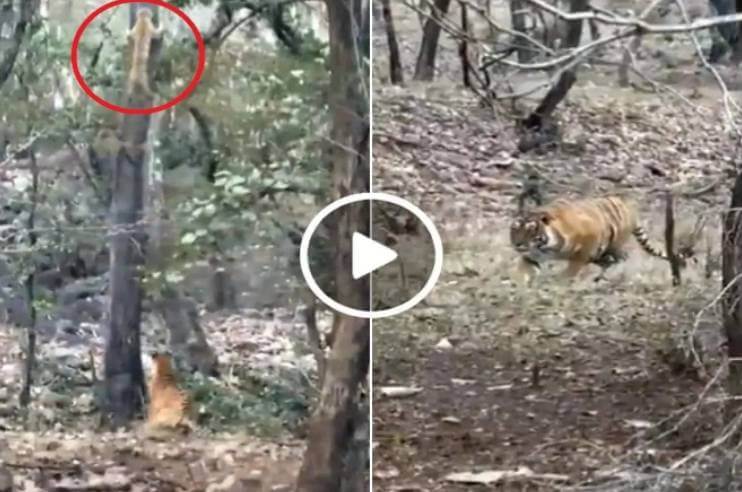






 Share
Share Home
Home Call Us
Call Us Book Now
Book Now